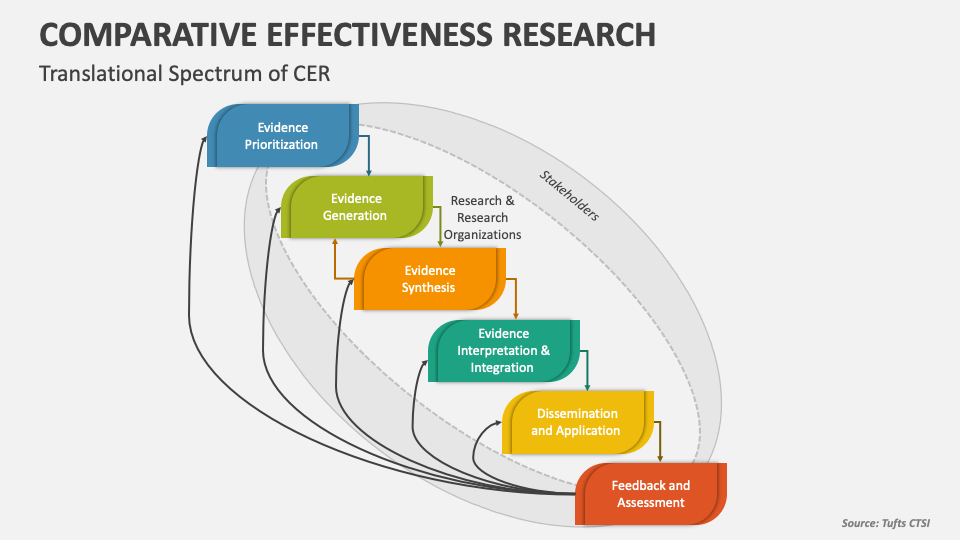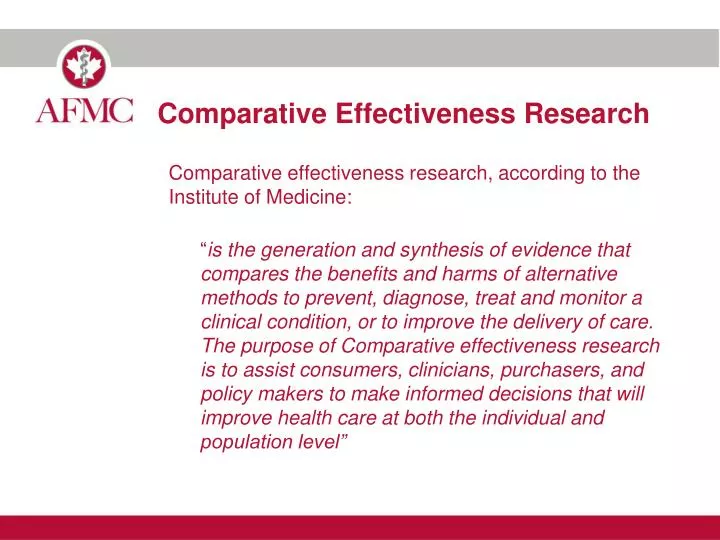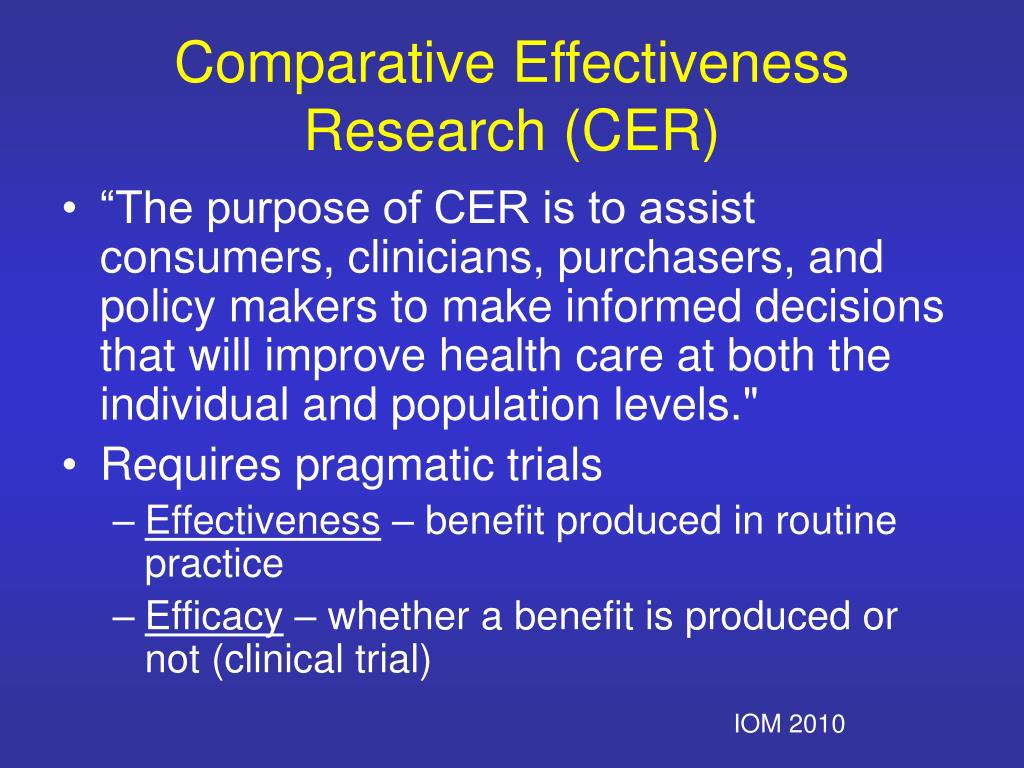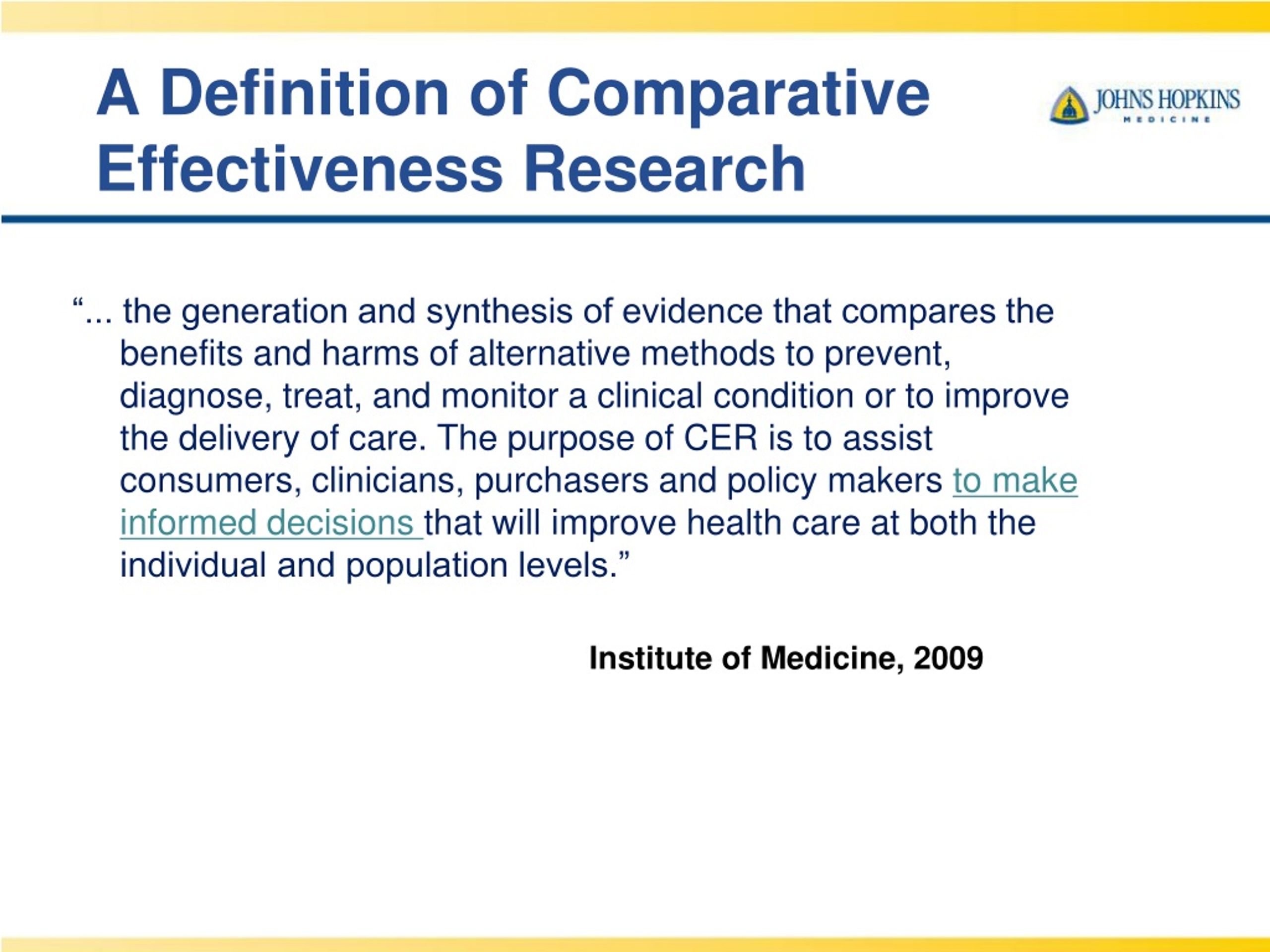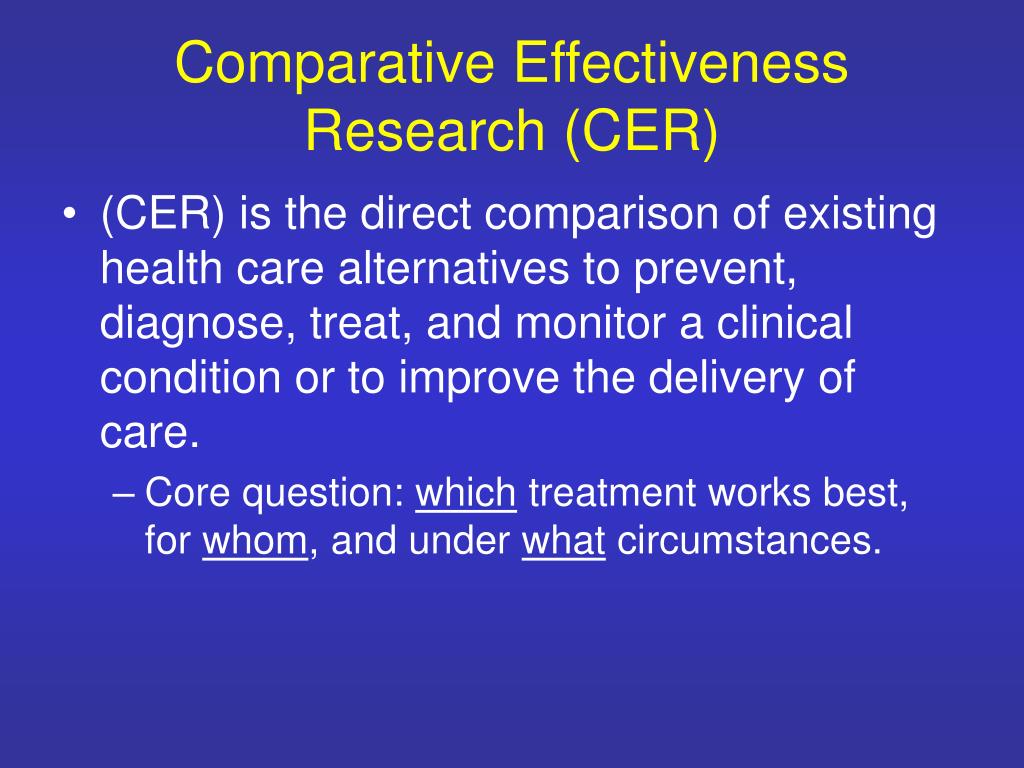What Is The Main Goal Of Comparative Effectiveness Research
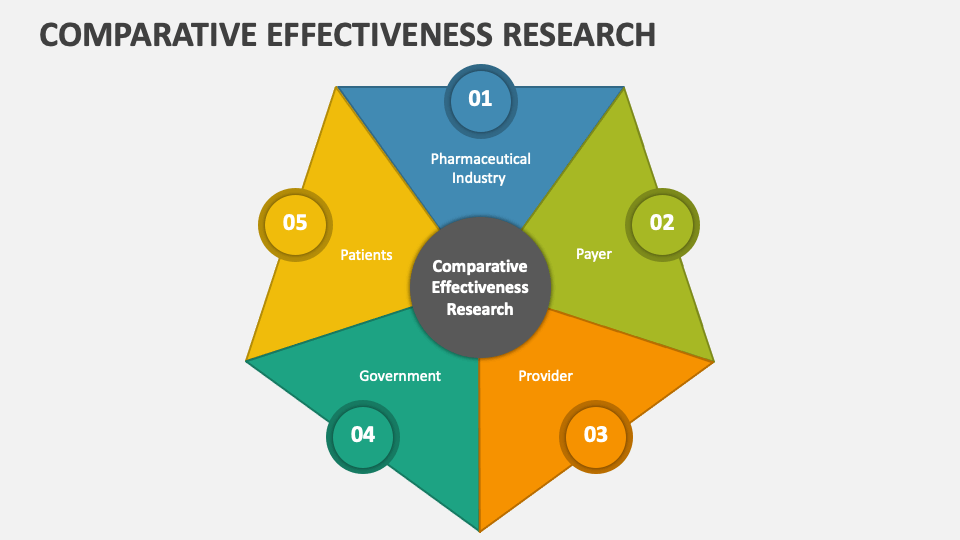
Lives hang in the balance every day as doctors and patients make crucial healthcare decisions. Comparative Effectiveness Research (CER) offers a path to better outcomes by rigorously comparing different treatment options.
At its heart, CER aims to provide evidence-based insights that empower informed decisions, bridging the gap between research findings and real-world clinical practice. This data revolution has the potential to reshape healthcare as we know it, making it more effective and more patient-centered.
The Core Goal: Better Healthcare Decisions
The primary goal of Comparative Effectiveness Research is to identify which treatments, interventions, and strategies work best for specific patients and under specific circumstances.
It's about moving beyond the question of whether a treatment *works at all* to understanding *how well* it works compared to other available options. This includes factoring in benefits, risks, and costs for diverse patient populations.
CER prioritizes real-world clinical settings. It is not about lab experiments; it's about how treatments perform in the hands of everyday doctors with a range of patients.
Who Benefits from CER?
Patients stand to gain immensely from CER. It allows them to actively participate in their healthcare decisions, armed with evidence to choose the treatment best suited to their needs and preferences.
Clinicians can use CER findings to guide their treatment recommendations. This will allow them to ensure they are aligned with the best available evidence.
Policymakers and healthcare payers also benefit. CER informs coverage decisions and helps allocate resources to the most effective interventions, improving the value of healthcare spending.
What Does CER Compare?
CER encompasses a wide range of comparisons. This includes medications, surgical procedures, medical devices, diagnostic tests, and even lifestyle interventions.
These comparisons consider various outcomes, such as survival rates, symptom relief, quality of life, and adverse effects. By comparing these factors, CER helps paint a complete picture of each treatment's profile.
The research also examines how treatments impact different patient groups, taking into account factors like age, sex, race, ethnicity, and pre-existing conditions.
Where is CER Conducted?
CER is conducted in various settings. It includes academic research institutions, government agencies, and private organizations dedicated to healthcare research.
Large healthcare systems and insurance companies also play a role in CER. They can utilize their data to compare treatment outcomes for their patients and members.
The Agency for Healthcare Research and Quality (AHRQ) plays a central role in coordinating and funding CER initiatives across the United States.
When is CER Most Relevant?
CER is particularly valuable when multiple treatment options exist for a condition. This is where uncertainty arises regarding the optimal approach.
It is also crucial when treatments have significant risks or costs associated with them. Here, informed decision-making can have a significant impact.
CER is also important when there are variations in treatment practices across different regions or healthcare providers, because this indicates a need for standardized, evidence-based guidelines.
How is CER Conducted?
CER employs a variety of research methods. These include randomized controlled trials, observational studies, meta-analyses, and systematic reviews.
These methods rigorously analyze existing data and gather new evidence to compare the effectiveness of different treatments. This is done with the purpose of minimizing bias and ensuring the reliability of the findings.
Patient engagement is a key aspect of CER. Researchers actively involve patients in the design and conduct of studies to ensure that the research addresses their priorities and concerns.
The Ongoing Impact of CER
CER is transforming healthcare by providing the evidence needed to make informed choices. It's about putting the right treatment in the hands of the right patient at the right time.
The Patient-Centered Outcomes Research Institute (PCORI) is playing a pivotal role in advancing CER. They fund research projects that address high-priority questions identified by patients and stakeholders.
While progress has been made, continued investment and collaboration are essential to expand the scope and impact of CER. It is critical to translate findings into actionable guidelines and clinical practice changes.

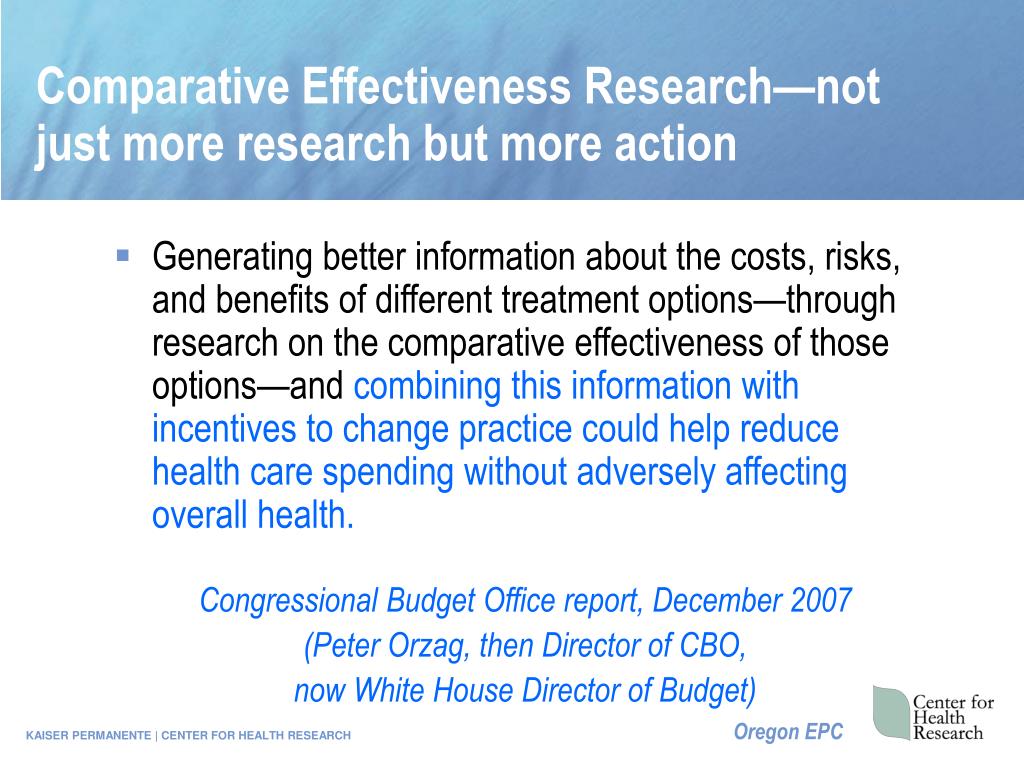
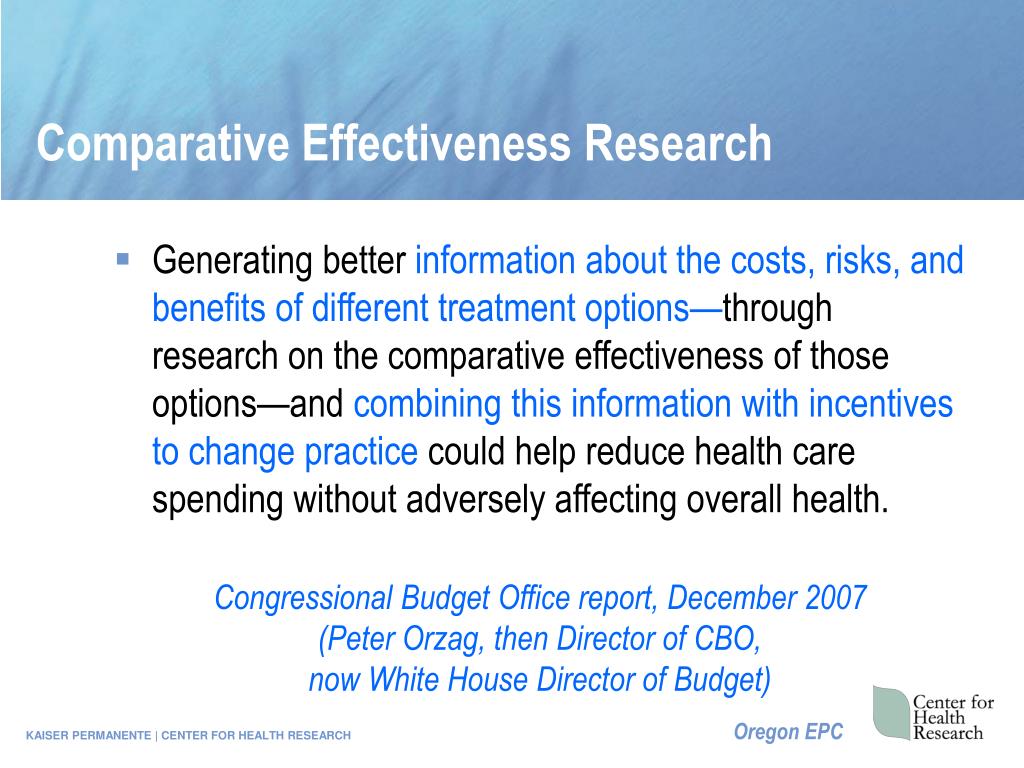
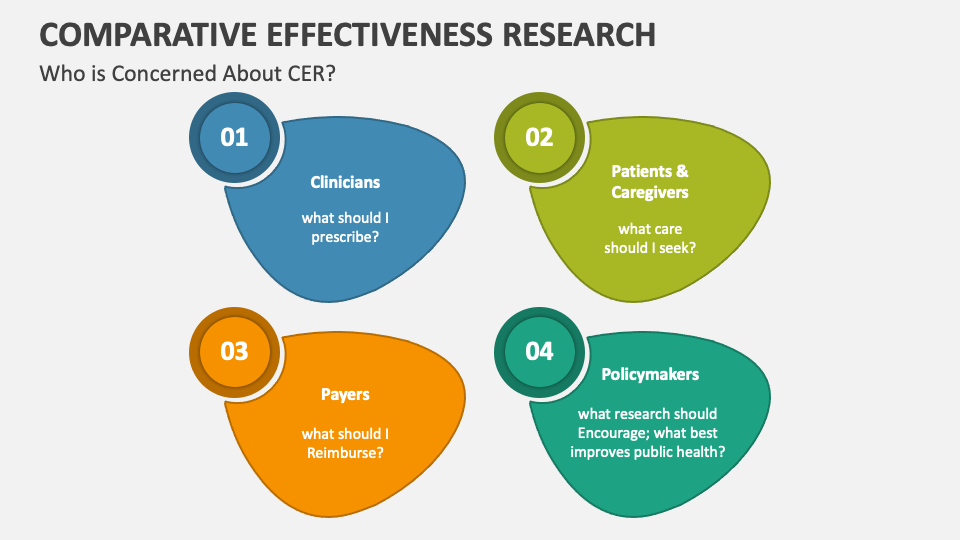
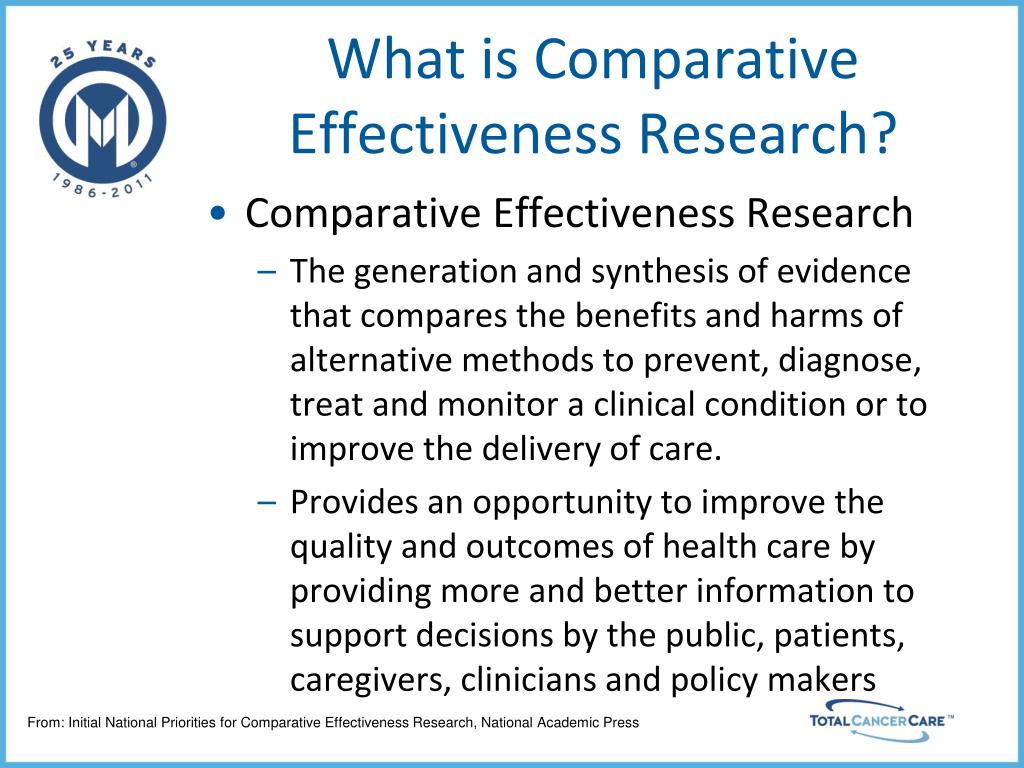



.jpg)
